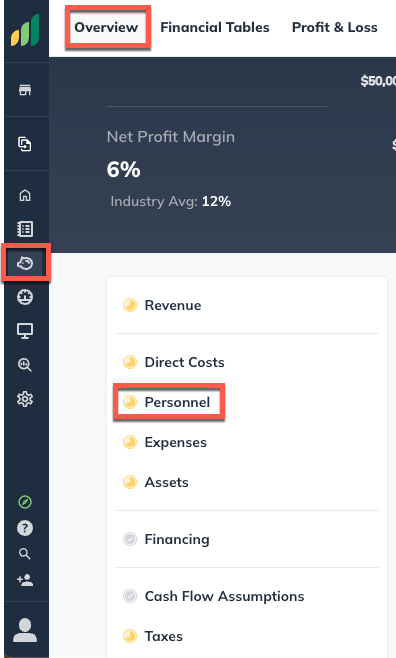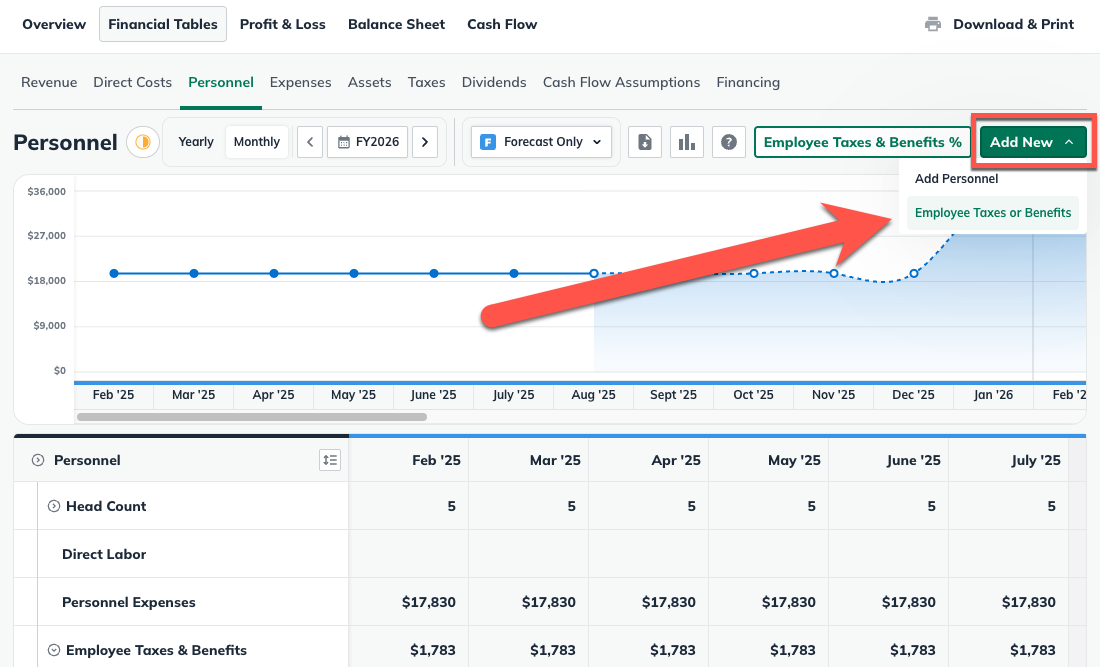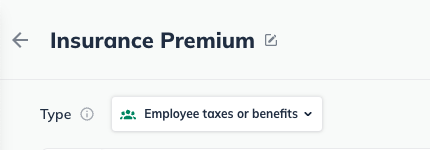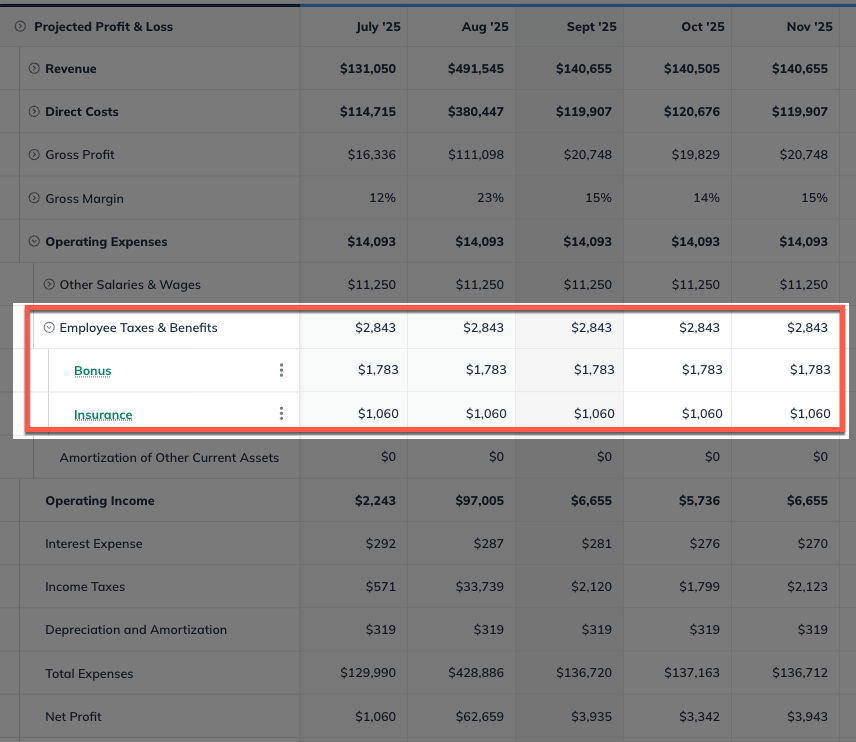Forecasting Revenue Expenses Direct Costs Personnel
Employee taxes and benefits
When forecasting labor costs, it’s easy to focus solely on wages or salaries. However, every employee’s total cost includes much more than their base pay. Payroll taxes, health insurance, retirement contributions, and other related expenses all factor into the true cost of employing your team. Incorporating these considerations into your projections ensures your forecasts capture the full scope of your workforce expenses, leading to more accurate budgeting and planning.
Employee Taxes and Benefits refer to all expenses that extend beyond an employee’s base pay. These can include both required costs, such as payroll taxes, and elective ones, like health insurance premiums or retirement contributions. Factoring these into your forecasts ensures a more complete and accurate understanding of your total labor costs.
Note: Previously, a single “burden rate” represented these expenses, splitting employee-related costs between direct and operating expenses. Now, these expenses live within operating costs, aligning with standard accounting practices and providing a clearer view of labor costs. You can still use the the single burden rate if your planning isn't ready to break out those expenses. You can read more about how to use it here: Burden Rate
Add Employee Taxes or Benefits
Adding employee taxes or benefits allows you to account for specific costs like health insurance, retirement contributions, or other fixed expenses that don’t vary directly with wages. This method is ideal for capturing expenses with known amounts, ensuring greater precision in your labor cost forecasts. It’s particularly useful for established businesses or those preparing detailed financial plans.
In the Forecast Overview click Personnel:

Click the Add New dropdown and select Employee Taxes or Benefits:

This will create a new expense entry. Name the expense, then select Employee Taxes and Benefits as the Type.

Select if you will model it with a constant amount or a varying amount over time, and then input the cost.

Click Create & Exit:

In the LivePlan Profit and Loss statement, you'll see the calculated amount under Operating Expenses on the Employee Taxes & Benefits line:

Understanding the Importance of Accurate Labor Cost Forecasting
Labor costs represent one of the largest expenses for most businesses, and their complexity can make accurate forecasting a challenge. Using a flat percentage to estimate these costs provides a simple method for approximations. However, businesses might find that this approach lacks the nuance needed to capture the real-world variability of employee-related expenses.
A percentage-based estimate is appropriate for payroll taxes, for instance, as they typically increase in direct proportion to wages. On the other hand, health insurance premiums and similar benefits tend to have fixed costs that do not fluctuate with salaries. By itemizing these expenses, businesses can more precisely model their labor costs based on the specific nature of each category. This is useful for established businesses seeking to refine their forecasts or for those preparing to compare projections against actual accounting data.
Real-World Applications
Consider a small business planning its labor costs for the upcoming year. The business knows it will pay a payroll tax rate of 7.65% and has fixed health insurance premiums totaling $17,250 annually. Using this approach, the business can enter the payroll taxes as a percentage and the health insurance premiums as an itemized expense. This approach provides a clearer picture of total labor expenses by accurately representing each cost type.
For businesses operating in industries with high labor costs, such as manufacturing or healthcare, this flexibility is particularly valuable. These businesses often have a mix of scalable and fixed employee-related expenses. The ability to itemize fixed costs and estimate scalable ones provides a balanced approach to labor cost forecasting.
